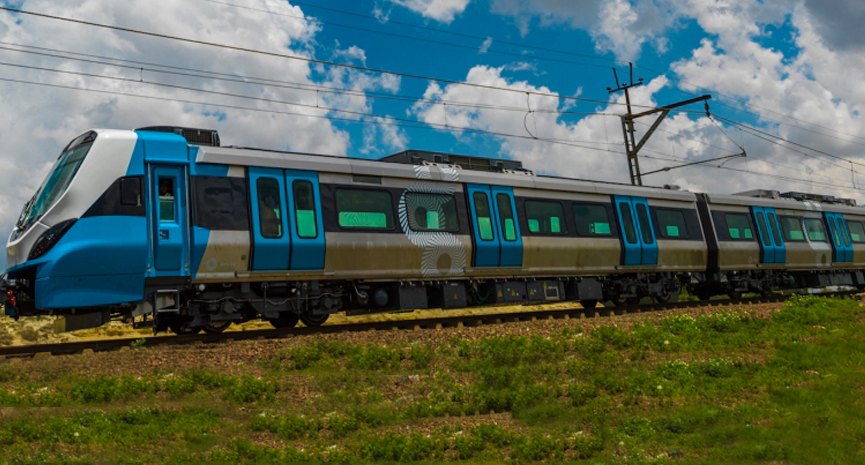Alstom's JV Gibela's first trains for PRASA begin commercial service
Railway - Alstom has recently announced that its South African joint venture (JV) partner Gibela has seen its first 13 X'Trapolis Mega trains have entered commercial service on South Africa's commuter rail tracks. Jacob Zuma, the State President of the Republic of South Africa, unveiled the first new trains at Pretoria station in front of more than 2000 guests.

May 11, 2017: Alstom has recently announced that its South African joint venture (JV) partner Gibela has seen its first 13 X'Trapolis Mega trains have entered commercial service on South Africa's commuter rail tracks. Jacob Zuma, the State President of the Republic of South Africa, unveiled the first new trains at Pretoria station in front of more than 2000 guests. The event started with a ribbon-cutting at the Rissik Street station prior to a short train ride to Pretoria station with Zuma on board.
The new 600 state of the art fleet is built by Gibela for the Passenger Rail Agency of South Africa (PRASA). The first 20 trains have been manufactured at Alstom's Lapa factory in Brazil. They will bring modern, reliable and efficient suburban railway transport to the country's population. The X'Trapolis Mega is a brand new train in Alstom's X'Trapolis suburban range. The trains will initially run in the Koedoespoort – Rissik Corridor in Pretoria during peak and off-peak hours with a total of 146 trips a day.
Marc Granger, CEO, Gibela, said, "This is a historic moment for Gibela, its shareholders and the country at large as South African commuters finally have access to a service that marks the entry into a new age of rail."
"By bringing Alstom's skills and infrastructure to South Africa, we are helping to upgrade the country's railway transport. The success of this project with Gibela positions us as a long-term rail partner in South Africa," commented Yvan Eriau, managing director, Alstom Southern Africa and CEO of Alstom Ubunye.
The construction of Gibela's manufacturing facility in Dunnottar is well underway and due to be completed by the end of 2017. The on-site Training Centre has already been completed and admitted its first intake of students in April 2017. At peak production, Gibela will produce 62 trains a year (each train-set comprises six cars).
A panel of 200 local suppliers will be manufacturing equipment and components to the 580 locally-produced trains from 2018 onwards. Local suppliers will be able to compete in global markets, opening up real potential for significant exports and foreign exchange earnings for South Africa.


